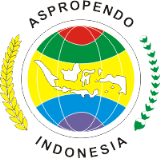PELAKSANAAN PEMBELAJARAN E-LEARNING PRODUK KREATIF DAN KEWIRAUSAHAAN KELAS XI SMK NEGERI 5 SUKOHARJO
Abstract
E-learning during a pandemic is the best solution to support the learning process, but what about vocational students in implementing e-learning. This study aims to determine: (1) Implementation, (2) Supporting and inhibiting factors, and (3) solutions for inhibiting factors for the e-learning process at SMK N 5 Sukoharjo. This type of research is a descriptive study with a qualitative approach. This study used purposive sampling and snowball sampling techniques with the class XI PKKwu teacher as the key informant. Data collection techniques using interviews, observation, documents, and case studies. The data validity test used source triangulation and method triangulation. Data analysis techniques with data collection, data reduction, data presentation, and drawing conclusions. The results showed that: 1) The implementation of PKKwu e-learning at SMK N 5 Sukoharjo consisted of planning, implementation, and evaluating. Planning using face to face learning lesson plans due to the lack of preparation for online learning. The implementation of PKKwu e-learning learning is carried out through the Google Classroom, Edmodo, Email, Whatsapp application, resulting in less than optimal learning of PKKwu practices, the practice of making handsanitizer and disinfectants. Evaluation is done by assessing the timeliness of collection and the correctness of answering the assignment given. 2) Supporting factors, namely the provision of credit subsidies and borrowing HP. Inhibiting factors are teacher lack of understanding of e-learning, unstable internet connection, lack of literature and official school learning media and students different economic levels. 3) The solution to these obstacles is continued coordination with parents, the use of text and audio-based learning media to minimize quotas, develop school websites, and provide training on e-learning to teachers
Keywords: E-learning, Evaluation, Implementation, Inhibiting Factors, Supporting Factors, Solution
Full Text:
PDF (Bahasa Indonesia)References
Abdallah, A.K. (2018). Parents perception of e-learning in abu dhabi schools in united arab emirates. IJASOS- International E-Journal of Advances in Social Sciences, IV(10):30–41. doi: 10.18769/ijasos.415513.
Aidah, S. (2019). Pemanfaatan e-learning sebagai media pembelajaran di STIA Al Gazali Barru (suatu studi terhadap pemanfaatan model e-learning berbasis software claroline). Meraja Journal, 2(1):1–12.
Ariani, D. (2018). Komponen pengembangan e-learning. Jurnal Pembelajaran Inovatif, 1(1):58–65.
Baragar, A. (2020). Tips to prepare an e-learning lesson. The K-12 Teachers Alliance 1.
Belaya, V. (2018). The use of e-learning in vocational education and training (vet): systematization of existing theoretical approaches. Journal of Education and Learning, 7(5):92. doi: 10.5539/jel.v7n5p92.
Cicek, V. (2013). Effective use of lesson plans to enhance education. International Journal of Economy, Management and Social Sciences 2(6):334–41.
Hadisi, L. (2015). Pengelolaan teknologi informasi dalam menciptakan model inovasi pembelajaran (e-learning). Jurnal Al T’dib, 8(1):117–40.
Hanum, N.S. (2013). Keefetifan e-learning sebagai media pembelajaran (studi evaluasi model pembelajaran e-learning SMK Telkom Sandhy Putra Purwokerto). Jurnal Pendidikan Vokasi, 3(1):90–102. doi: 10.21831/jpv.v3i1.1584.
Hasse, C. (2017). Technological literacy for teachers. Oxford Review of Education, 43(3):365–78.
Idrus, L. (2019). Evaluasi dalam proses pembelajaran. Jurnal Manajemen Pendidikan Islam, 2(9):920–935.
Josep, G. (2020). 5 reasons why online learning is the future of education. Education. Https://Www.Educations.Com/Articles-and-Advice/5-Reasons-Online-Learning-Is-Future-of-Education.
Kuntowicaksono. (2012). Pengaruh pengetahuan wirausaha dan kemampuan memecahkan masalah wirausaha terhadap minat berwirausaha siswa sekolah menengah kejuruan. The Journal of Economic Education, 1(1).
Rimmer, W. (2020). Responding to the coronavirus with open educational resources. International Journal of TESOL Studies, 2:17–31. doi: 10.46451/ijts.2020.09.03.
Sudarsana, I.K., dkk. (2019). The implementation of the e-learning concept in education. Journal of Physics: Conference Series, 1363(1). doi: 10.1088/1742-6596/1363/1/012063.
Wan H., dkk. (2020). Covid-19 pandemic: langkawi vocational college student challenge in using google classroom for Teaching and Learning (T&l). International Journal of Advanced Trends in Computer Science and Engineering, 9(3):3299–3307. doi: 10.30534/ijatcse/2020/127932020.
Yustanti, I., and Novita, D. (2019). Pemanfaatan e-learning bagi para pendidik di era digital 4.0 utilization of e-learning for educators in digital era 4.0. Jurnal Sosial Humaniora Sigli, 2(2):35–41. doi: 10.47647/jsh.v2i2.169.
Refbacks
- There are currently no refbacks.













